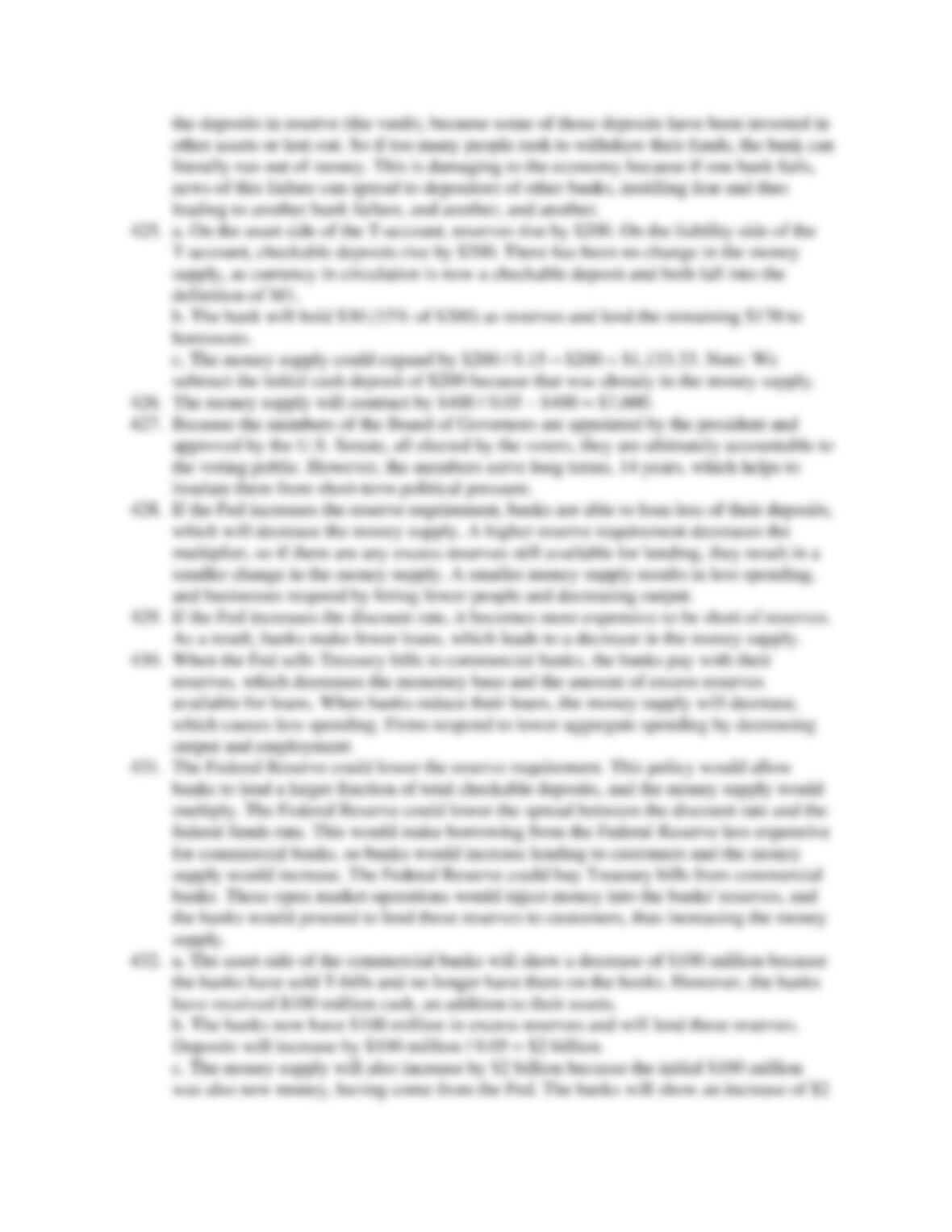the interest rate charged on subprime loans.
the difference between the interest rate at which banks lend to each other and the
interest rate on U.S. government debt.
the rate of return in securitization.
the difference between interest rates in the U.S. and interest rates in China.
In the financial crisis of 2008, which of the following firms failed?
Bear Stearns, an investment bank
AIG, an insurance company
Lehman Brothers, an investment bank
Bank of America, a commercial bank
In return for injecting capital into banks, the U.S. government received:
loans at an interest rate below the prime rate.
bonds issued by the bank.
shares of stock in the bank.
_____ occurs when financial institutions assemble pools of loans and sell shares in the
income from these pools.
In 2008, when the U.S. financial system collapsed, it led to:
very high inflation, and the Federal Reserve followed a strict contractionary
monetary policy to bring prices down.
the Federal Reserve lowering the interest rate, and the economy revived as
businesses and individuals secured low-interest loans.
a severe cycle of deleveraging and a credit crunch for the economy as a whole.
the Federal Reserve increasing the interest rate, which further destabilized the
economy.
A firm uses financial leverage when it:
replaces labor with capital.
borrows money from a bank to enlarge a factory.
raises the price of a product when demand is inelastic.
gets a volume discount from a supplier.

























